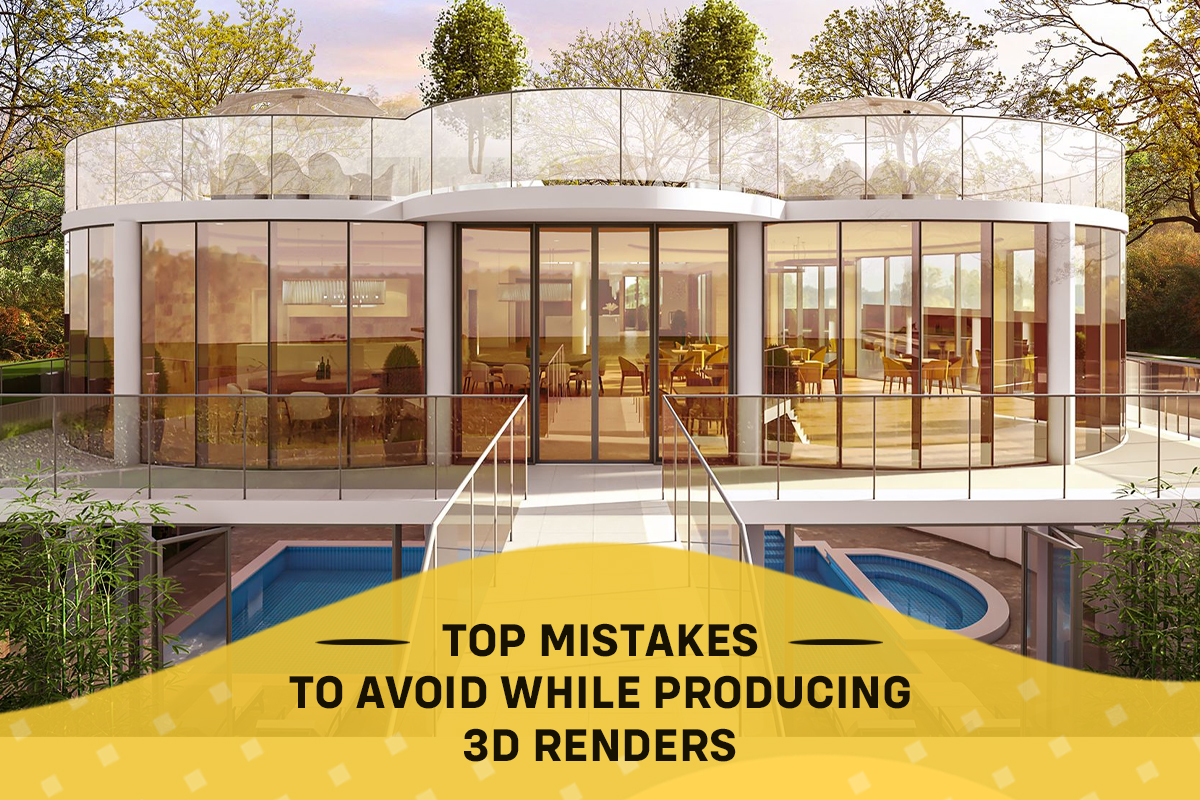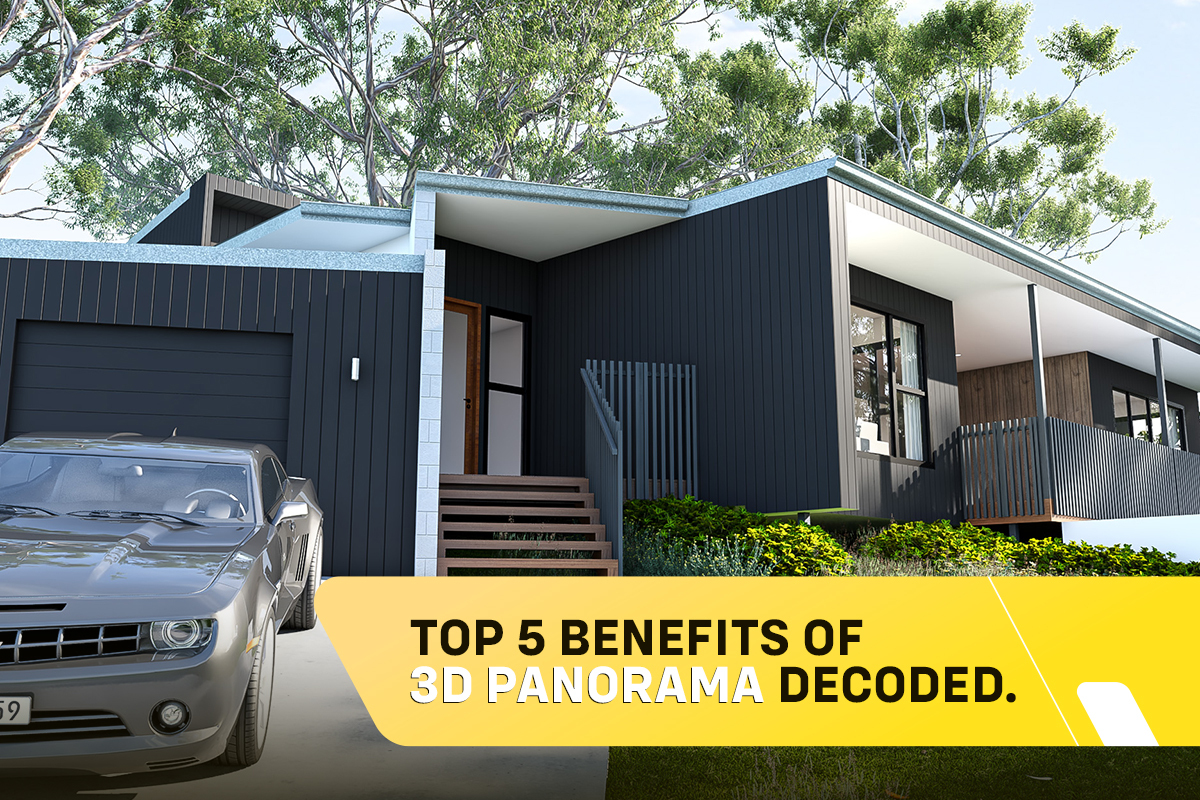3D renders are all about precision and attention to detail. Even the tiniest bits. Designers or architects who do this for a living must keep in mind the intricacies of the art form. They must pay special attention to ensure the final product is exactly what the client asked for.
But it’s not easy to do that. Not everyone is the second coming of Leonardo da Vinci, so mistakes are bound to happen.
But a competent and accomplished 3D rendering company does not have a lot of room for mistakes. They need to be spot on with their execution and ensure that they minimize the odds of mistakes at every possible level. This is done keeping in mind the minutiae of 3D rendering, and deep industry knowledge, insights, and experience.
Before we get to the top 3D rendering mistakes to avoid, let’s talk about what makes an outstanding 3D render.
Provide Quality 3D Rendering Services
Nowadays 3D rendering services are everywhere. Be it an office complex, a restaurant makeover job, or a newly-married couple’s first home, all of them will go through the ins and outs of 3D rendering. Now that we have the technology, of course, people want their dream projects to come to life and visualize their imaginations.
Quality 3D renders are all about looking as realistic as possible. It is about impressing your clients, and enticing investors, and business owners by using the latest ultra-modern technology and powerful 3D rendering software.
This will help them to produce photorealistic renders of their projects. It’s important for designers to understand all the requirements, the interaction of lights and shadows on all the surfaces, the textures of the surfaces, reflections, etc. Besides the actual renders, a rapid all-around service including multiple edits and iterations to follow are other key points of focus for a 3D rendering company.
Read: A Complete Guide to Check Quality of 3D Rendering
Now, let’s talk about the common mistakes a 3D rendering company is likely to make trying to implement these functionalities:
-
Dull design
3D renders are meant to tell a story to the client. You want to invoke a sense of positivity and a “wow factor” and get the client to instantly like your design.
But the primary goal is also to portray the space as accurately as possible. You cannot do this with simple tables, walls, and windows. It is bound to look underwhelming even if the actual room would have a clean, minimalist appearance since it’s not easy to showcase that in a 3D rendering.
This can be fixed by including some simple details such as bookshelves, plants, furniture, or anything else that will owe your renders a real essence and breathe life into them. Basically, add a “human touch” to the project to ensure your designs look attractive and appealing.
These details may seem – small – but to the client, it is the difference between a lifeless space and a potentially livable one. Make sure you give your clients what they need.
-
Excessive Designs
Yes, there is such a thing as too much creativity. It’s not too difficult for artists and designers to get carried away with the technological possibilities and include designs and details that are unnatural or unnecessarily “futuristic”. You will end up driving away your clients’ enthusiasm by showing them something that isn’t realistically possible.
You require a render that your clients can readily comprehend and conceptualize. Take into account the current 3D rendering trends and increase the likelihood of selling your ideas. Regardless of how creative your concepts are, clients are unlikely to be wooed if the design is too far-fetched.
Retain a natural and authentic appearance. Concentrate on the only important aspect: your clients’ wishes. 3D rendering is an art that demands patience, skill, and expertise, but giving due attention to details and guidance is the best way to deliver what your clients need.
-
Unnatural Reflections
Reflections are necessary for all types of 3D renderings. Virtually every object reflects light to some degree, so reproducing the exact effects and making it look authentic is a difficult task.
Glassy or mirrored surfaces are the most challenging to render, with high chances of them looking unrealistic, clumsy, or even deceptive.
The only way to avoid this is to consider all these flaws beforehand. You can improve upon their unrealistic nature by adding a few natural touches to make them look more realistic.
-
Light/shadow bouncing
Light bouncing is another term for indirect lighting or global illumination. It’s a shadow effect that lets you showcase shadows. With just a few light bounces, you can make the shadows look dark. And, with a few more bounces, you can make them look partially lit in your 3D renders
Most 3D rendering companies skip a few light bounces since it’s a convenient way to save time while rendering. This is where the trouble begins. Most artists overlook how many light bounces are required to make their 3D renders appear realistic. Applying too few will end up losing the realism you need to impress your clients, whereas too many will just end up making a mess.
Control the light and you control client impressions.
-
Recycling
Scale figures of human beings are readily available to download. They do add an element of realism to your 3D renders, especially if they’re applied at the right angles.
This is a good path to take in most instances because it will save you time and energy, but there is a drawback.
The problem is that too many 3D rendering companies use the same figures and models. In other words, recycleD images can be a major turn-off that detracts from your design. Your clients will feel misled by all those recycled details, rather than focus on the focal points of your renderings.
Recycling is, by no means, a terrible idea. It can even turn out to be quite helpful in some cases. The key point to remember is to avoid using them excessively. Rather, a rendering library that includes a number of other options is a much more novel idea and will keep your designs looking fresh and original.
-
Textures
Textures are a big part of 3D rendering. Highly defined textures of surfaces provide your renders with a touch of human quality. It’s still quite an underrated feature, but a major point of difference between a client being impressed or not.
But as mentioned before, going too far with textures and over-detailing your renders is another cause of downfall. So don’t strive for perfection, and remember that a balance of realistic and synthetic is the ideal way to approach this idea. Use high-definition textures wherever they’re possible to keep your designs from seeming artificial without going overboard.
-
Perspective
An inaccurate perspective can harm even the most exquisite 3D renders. This won’t just detract from your original designs, but it is a fundamental design aspect that will make a poor impression professionally.
The right perspective is everything for 3D rendering. It will ensure that every detail gets captured correctly and allow you to highlight the characteristics you want to while concealing any potential imperfections.
Keep your render at eye level or use a bird’s-eye view to solve this problem. The best course of action is to use a combination of the two techniques as much as possible. This way, you can benefit from both views while also producing an exhilarating client experience and exhibiting your design in the most interactive way possible.
Precision and attention to detail are vital for a 3D rendering company. Even the simplest details matter. Designers and architects who work in this field must be conscious of the intricacies of the craft. They must pay close attention to guarantee that the final result is exactly what the client wanted.
Overview:
A professional 3D rendering service provider will make sure the errors are minimized and best practices are followed. With extensive industry expertise and experience, Render Visuals aims to do just that.
At Render Visuals, we deliver a wide range of 3D rendering services including 3D architecture, to help bring your clients’ dream projects to life. Connect with us on www.rendervisuals.com.au or contact us at +61 -406822061/ 488805395 to know more.



